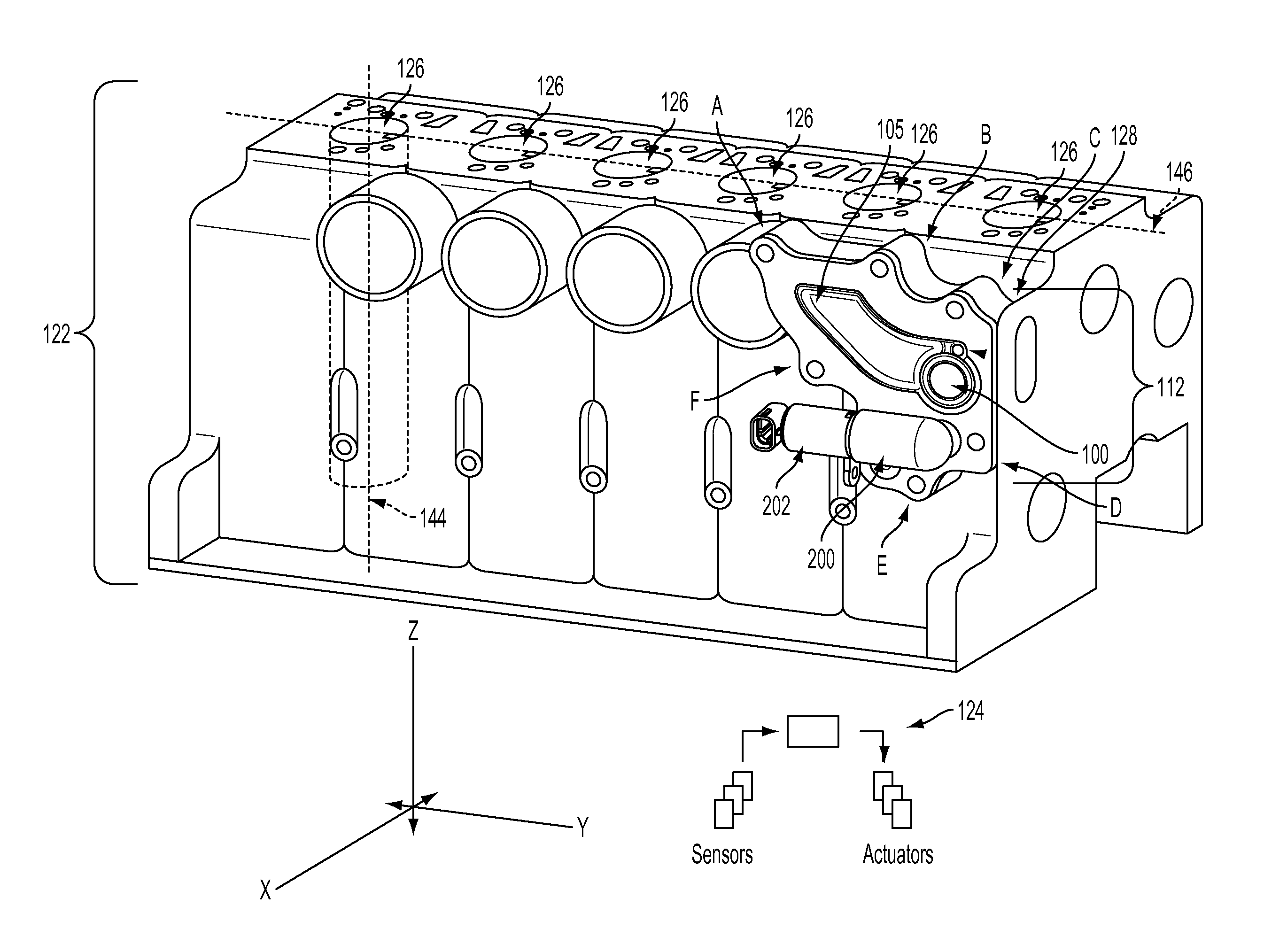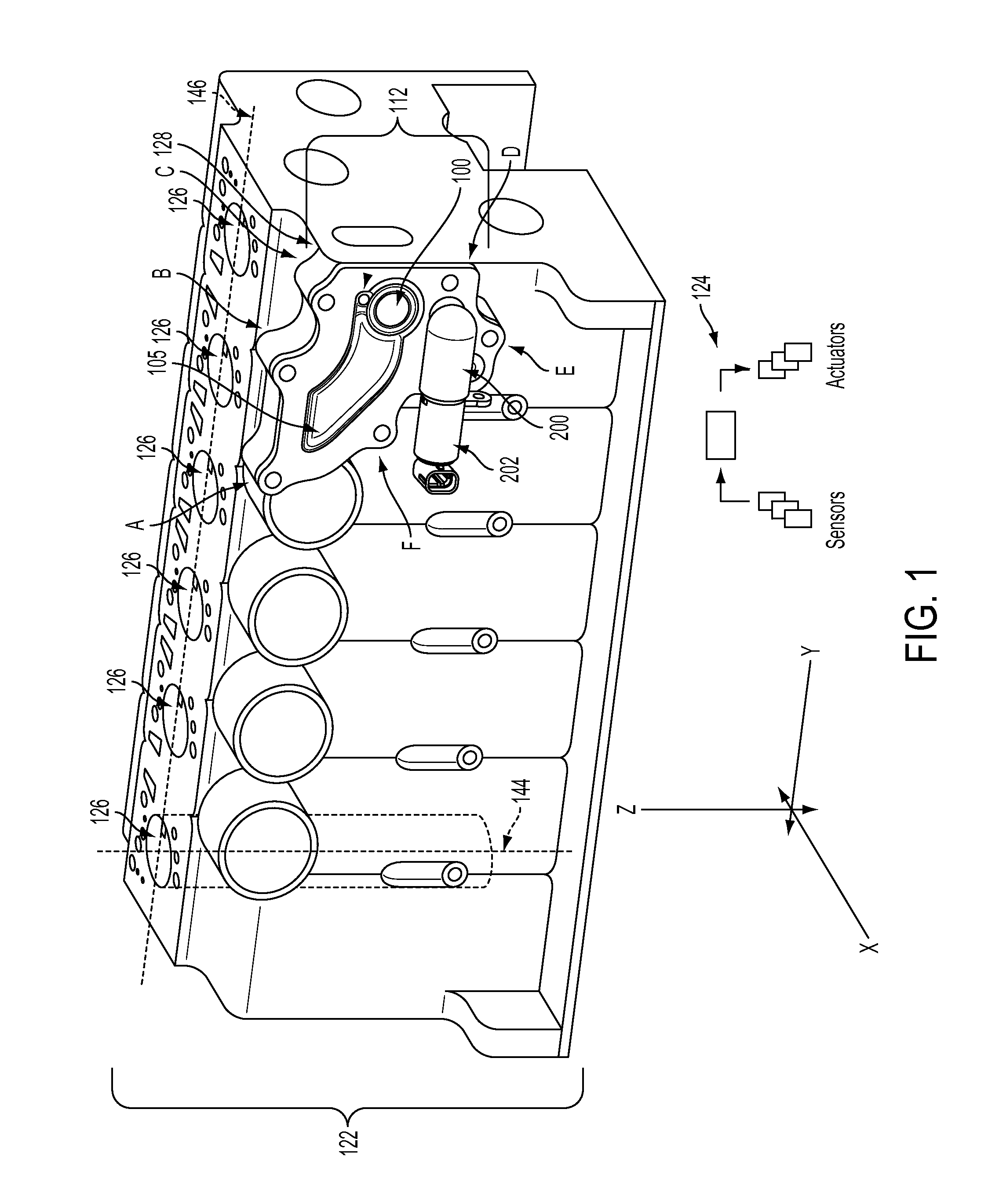Engine cover plate
a technology for engine covers and covers, applied in engine cooling devices, valve arrangements, machines/engines, etc., can solve problems such as loss of fluid flow control, and achieve the effect of reducing overheating
- Summary
- Abstract
- Description
- Claims
- Application Information
AI Technical Summary
Benefits of technology
Problems solved by technology
Method used
Image
Examples
Embodiment Construction
[0023]The subject matter of the present disclosure is now described by way of example and with reference to certain illustrated embodiments. It will be noted that figures included in this disclosure are schematic, and are identified as such. In the schematic figures, views of the illustrated embodiments are all not drawn to scale; aspect ratios, feature size, and numbers of features may be purposely distorted to make selected features or relationships easier to see.
[0024]Methods and systems are provided for an engine block configuration and coolant cavity cover plate with integrated engine oil and coolant fluid coupling. FIG. 1 shows an example engine block 122 configuration compatible with the cover plate and an example cover plate 112. Coolant exiting a fluid pump is contained within the engine block by a cover plate bolted to a coolant cavity on the outer face of engine block. The cover plate also acts to fluidically couple the fluid pump to an engine water jacket opening. The in...
PUM
 Login to View More
Login to View More Abstract
Description
Claims
Application Information
 Login to View More
Login to View More - R&D
- Intellectual Property
- Life Sciences
- Materials
- Tech Scout
- Unparalleled Data Quality
- Higher Quality Content
- 60% Fewer Hallucinations
Browse by: Latest US Patents, China's latest patents, Technical Efficacy Thesaurus, Application Domain, Technology Topic, Popular Technical Reports.
© 2025 PatSnap. All rights reserved.Legal|Privacy policy|Modern Slavery Act Transparency Statement|Sitemap|About US| Contact US: help@patsnap.com



